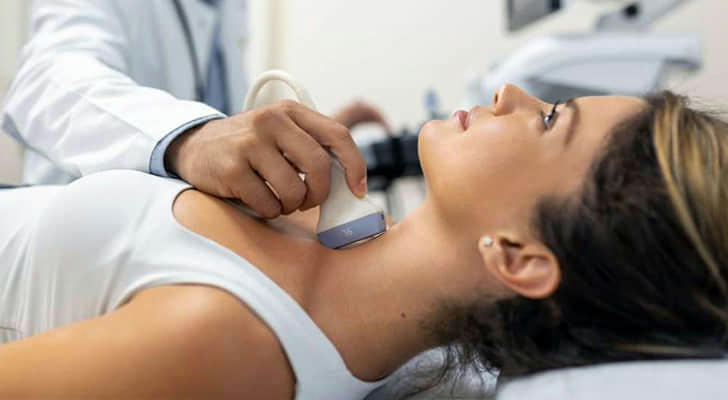Levothyroxine Dilemma: Why Millions May Be Using This Drug Without Need
Levothyroxine, also known as Synthroid, is crucial for managing hypothyroidism—a condition where the thyroid gland doesn't produce enough hormones. This gland, found in the neck, controls metabolism and affects various bodily functions. When hormone levels are low, it can cause symptoms like tiredness, weight gain, feeling down, and intolerance to cold.
In the United States, about 23 million people depend on levothyroxine to balance their thyroid hormone levels. It's one of the most prescribed medications because it effectively relieves symptoms and enhances quality of life for those with hypothyroidism. Diagnosis usually involves checking thyroid-stimulating hormone (TSH) and free thyroxine (Free T4) levels in the blood.

Seasonal Changes and Diagnosis
Recent research highlights concerns about diagnosing hypothyroidism accurately. Studies by Joe El-Khoury, PhD, in laboratory medicine reveal that seasonal shifts in TSH levels can lead to misdiagnoses. TSH levels vary throughout the year, often peaking in winter due to changes in daylight exposure that affect hormone production linked to mood and daily rhythms.
Diagnosing hypothyroidism becomes trickier during winter when symptoms overlap with seasonal affective disorder (SAD)—like fatigue, weight gain, and mood swings. Elevated TSH levels alone in winter could mistakenly point to hypothyroidism. Considering seasonal factors in thyroid testing might reduce unnecessary prescriptions of levothyroxine and improve the accuracy of diagnoses.
Diagnosing Hypothyroidism Wisely
To tackle these challenges, Joe El-Khoury recommends a nuanced approach to diagnosing and treating thyroid issues. He suggests retesting suspected cases of hypothyroidism after three months to account for seasonal TSH level changes. This method aims to ensure more precise and personalized treatment decisions, keeping pace with evolving insights into thyroid function dynamics.

Proposed Guidelines Revisions
Medical experts are debating raising the upper limit of normal TSH levels from 4.2 to 7.0 mIU/L. New findings suggest that starting levothyroxine treatment in patients with TSH levels below 7.0 mIU/L might not offer much benefit. Patients currently using levothyroxine should avoid suddenly stopping the medication. Instead, discussing personalized treatment plans with healthcare providers is essential, considering factors like age, overall health, and specific symptoms.
Risks and Benefits of Levothyroxine Treatment
Levothyroxine aims to normalize thyroid hormone levels and alleviate hypothyroidism symptoms, boosting energy, mood, and overall well-being. Yet, like any medication, it carries risks. Overuse or improper use can lead to palpitations, weight loss, heat sensitivity, and, rarely, heart issues. Older adults and people with existing heart conditions face higher risks, necessitating careful monitoring and periodic checks of thyroid function to optimize treatment and minimize potential harms.
Overprescribing levothyroxine is particularly risky for adults aged 80 and above, who may experience side effects such as anxiety, heat sensitivity, diarrhea, and in severe cases, heart problems. Addressing this issue is crucial for modern healthcare, especially since up to 90% of current levothyroxine users may not actually need the medication. This underscores the need to reevaluate diagnostic approaches and base treatment decisions on thorough assessments of thyroid function rather than isolated test results.

Subclinical Hypothyroidism and Future Directions
Subclinical hypothyroidism adds complexity, marked by slightly elevated TSH levels and normal Free T4 levels. While traditionally treated with levothyroxine to lower TSH, recent research questions the benefits of such treatment. Overtreating subclinical hypothyroidism can lead to unnecessary medication burdens and heightened cardiovascular risks.Aid the pharmacist and pharmacy technician in prescription processing
Looking forward, advancing thyroid diagnostics and treatment protocols is vital for improving patient outcomes and cutting healthcare costs linked to unnecessary prescriptions. Collaborative efforts among healthcare providers, researchers, and regulators will play a key role in refining guidelines based on current scientific knowledge to prioritize patient safety and well-being.
Recent advancements in understanding thyroid function have highlighted the intricate interplay between genetics, environmental factors, and thyroid health. Genetic studies have identified specific gene variants that influence thyroid hormone production and metabolism, shedding light on why some individuals may be more prone to thyroid disorders than others. Environmental factors such as exposure to pollutants, dietary habits, and stress levels also play significant roles in thyroid function.
Moreover, emerging research is exploring alternative treatments for hypothyroidism beyond levothyroxine. For instance, some studies suggest that combining levothyroxine with liothyronine (T3 hormone) could offer superior symptom relief for certain patients. Additionally, dietary supplements like selenium and iodine, essential for thyroid hormone synthesis, are being investigated for their potential role in managing thyroid disorders.
In the realm of diagnostic technology, advancements in thyroid ultrasound and fine-needle aspiration techniques are improving the accuracy of thyroid nodule assessments and cancer diagnoses. These innovations enable healthcare providers to offer more precise and tailored treatment plans based on individual patient needs.
In conclusion, personalized medicine approaches, integrating genetic insights, environmental factors, and innovative treatments, hold promise for optimizing thyroid care outcomes and enhancing patient quality of life. As research continues to evolve, these developments will likely shape future guidelines and practices in thyroid health management.
